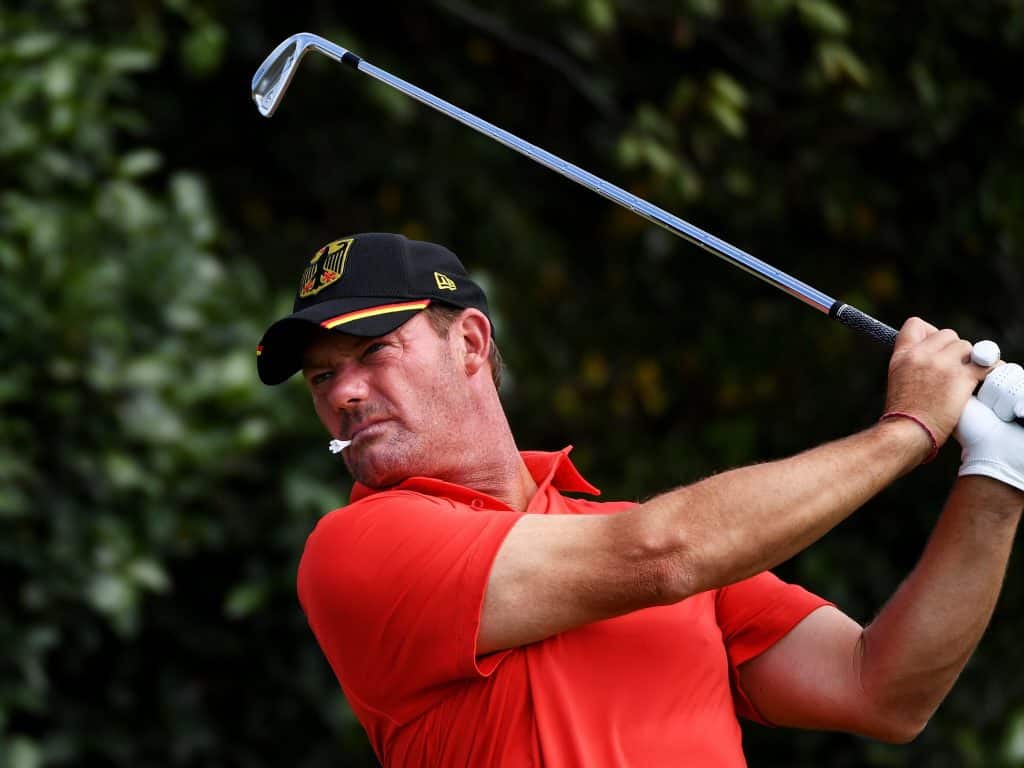Golf is a game of centimetres – millimetres, even – with endless routines, techniques and quirks all having a huge impact on your game.
The swing, undoubtedly, is the most important element of golf, and anything that is consistent, repeatable and produces a positive outcome for you could be considered a ‘good swing’.
However, there are a plethora of external factors that impact your ability to swing the club, and from one round to the next, finding the correct path and the sweet spot of the clubface can go from clockwork to feeling a world away.
While your swing itself may be consistent, is your entire routine and mindset equally as consistent? Or is it constantly changing, potentially having an effect on the execution of your game?
Every golfer should have a repeatable pre-shot routine, and a practice swing should definitely form part of this. One or two practice swings is ideal, helping you gauge backswing tempo and producing a divot which will provide feedback about club path. For partial shots, a practice swing is vital to give you the ‘feel’ of the shot and ensure you fly the ball the right distance to the pin.
In this article, I’ll dive a little deeper into why you should incorporate practice swings into your routine and explain how it can help improve your game.
Table of contents
How many practice swings should I take?
The number of practice swings you should take depends completely on personal preference, but I find two works the best. One can feel a little rushed, especially if you make a bad swing or don’t brush the ground in quite the manner you were intending.
One swing can be problematic, as ideally your routine will be identical for each shot, and if your one and only practice swing didn’t feel right, this won’t exactly fill you with confidence when standing over the ball.
Two practice swings gives you an opportunity to find the right feel, tempo and backswing length, as well as analyse the direction of your club path by inspecting your divots.
Three practice swings starts to become excessive, potentially slowing your group down and, over the course of a four-hour round, become a pace of play issue.
Two swings next to the ball prior to addressing and hitting your shot seems to be the right balance.
Fatigue is also a huge factor when playing 18-hole rounds of golf, and it’s crucial to remember that swings without the ball will also have an impact on your energy levels and muscle fatigue.
Someone taking three practice swings as opposed to two could be adding upwards of 50 full-length ‘shots’ to their round, meaning that final trudge up the 18th fairway will be completed with aching arms and legs.
Additionally, too long over the ball can start contributing to anxiety and a tendency to overthink the shot.
If your third practice swing was a bad one do you take a fourth? Are you now holding up the group? Do your muscles feel tighter with each practice swing?
Take too many practice swings and you’ll end up spending that long, stressful pause over your shot that by the time you come to hit it, tense muscles and a clouded mind will contribute to a poor outcome.
What happens if I hit the ball during my practice swing?
There’s no gag in golf more common than announcing ‘that’s one’ when your playing partner accidentally bumps their ball off the tee with their club while at address.
But is this a penalty? And what happens if I accidentally hit my ball while taking a practice swing? Well, this largely depends on where you are on the course.
If taking a practice swing on the tee block, accidentally striking your ball incurs no penalty; simply collect and re-tee your ball. This also applies if you had chosen to take your tee shot with the ball resting directly on the ground.
The rules of golf specify a stroke as ‘the forward movement of the club made to strike the ball,’ so you must be intentionally trying to hit the ball for a swing to be considered a shot.
Similarly, if you accidentally clip your ball while practicing a putt on the green, the ball can be replaced in its original position for no penalty.
However, anywhere else on the golf course is a somewhat different story.
Hitting your ball with a practice swing in a bunker, hazard or on the fairway technically doesn’t count as a stroke, but it does count as moving your ball while in play: a one stroke penalty.
Just ask PGA Tour player Hudson Swafford, who infamously hit his ball with his divot while taking a practice stroke.
In all these instances, your ball must be replaced, not played from where it ended up, as this would incur an even greater penalty: two strokes.
In a nutshell, practice swings on the tee and green that hit your ball incur no penalty.
Anywhere else is a one-shot penalty, so long as your ball is returned to, and played from, its original position.
How do I make my golf swing as good as my practice swing?
Translating your practice swing to your actual swing requires you to stay loose and without tension in your hands and arms. Developing a pre-shot routine is essential for creating a swing that is solid and repeatable under pressure, and can be taken from the practice range to the course.
An extremely common frustration for any golfer is the ease in which they release the clubface through the hypothetical impact of a practice swing, hitting the ground in a slightly downward impact before settling the club over the shoulder in a perfect finish.
Address the ball, take a swing and the result is a 50-metre chunk or a violent thin out to the right.
Why is it so easy to make a beautiful practice swing, yet so hard to find that rhythm and feel when striking the ball?
This most likely boils down to tension over the ball and anxiety about the shot.
When you’re taking a practice swing there is no consequence for poor execution. Muscles stay loose, swing speed is smooth. Everything just feels good.
However, step over the ball and suddenly the anxiety starts to rise at the thought of an imperfect flight falling short of the green and landing in a bunker or water hazard.
There’s two key things to making sure your perfect practice swing translates to the perfect strike of the ball: tension and speed.
When the golf ball is introduced to the mix, muscles tighten as a response to the importance of the situation.
Your swing now has an outcome, and you want that outcome to be good.
Tightening your grip and tensing your forearms is an effort from your body to rise to the occasion, but will only add inconsistency to your swing.
When you practice your swing with less tension, the weight of the clubhead is allowed to find the bottom of the swing with the help of gravity and centrifugal force.
When you tense your muscles, you’re trying to put the club at the low point, rather than allow the clubhead to find it naturally.
This is far less consistent than the constant force that gravity and centrifugal motion will have on your falling clubhead.
A simple drill to combat this is to monitor tension in your mouth with the help of a tee.
Place a golf tee between your lips and practice making swings – both with and without the golf ball – without allowing your teeth to touch the tee.

If you can hold a tee in your lips without clamping down on it, there’s a good chance your arms have stayed limber throughout the swing as well.
The second reason good practice swings become poor shots is because of a rise in swing speed when the ball is introduced.
Again, anxiety around the result of our shot can cause us to go for that bit extra and swing harder, adding greater inconsistency to our strike.
Swinging harder can cause you to lose shape or come out of the shot too early, contributing to a dreaded thin strike that barely gets off the ground or flies a green altogether.
While it can be extremely challenging to combat these mental impulses, there is a training aid that can help you practice a tempo that will yield results on the course.
Can training aids help improve swing tempo?
The SKLZ Gold Flex Golf Swing Trainer Warm-Up Stick is a simple training aid that teaches golfers to swing the club smoothly, rather than hit at the ball.
The SKLZ Gold Flex Golf Swing Trainer:
- With 10-20 swings every day will improve swing tempo, strength, and flexibility
- Is easy to use – simply “swing” the Gold Flex back and forth continually without stopping at impact position, as if swinging to a metronome
- Fights slices and flattens the swing
- Provides a low-impact stretch for pre-round warm-up
- Fits easily in your golf bag – legal to carry on course
Final message
Something as simple as your pre-shot routine can have a remarkable impact on your golf game.
If you don’t take a practice swing you should definitely take one, but any more than two and you’ll likely be spending too much time thinking about your shot, adding to anxiety about the impending strike.
If you’re one of those people constantly lamenting the fact you make beautiful practice swings that fall apart when hitting the ball, focusing on reducing tension and swinging with a smooth tempo, and better results may arrive sooner than you think.
- TaylorMade SIM2 Max Driver vs M4 Driver: Worth it in 2024? - April 15, 2024
- 3 Ways to Win the Mental Game with the Bridgestone Mindset Golf Ball - March 29, 2024
- TaylorMade SIM Max & SIM2 Max Drivers: Are they Still Relevant in 2024? - March 9, 2024




